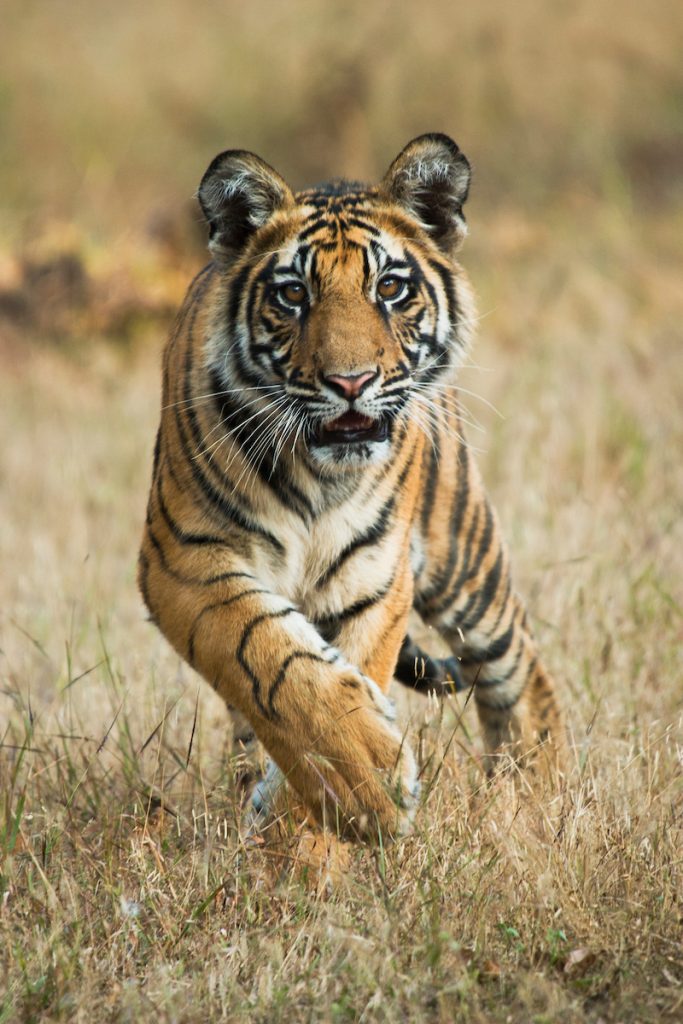Embassy obscures the truth of China’s wildlife trade
On May 2, at a meeting held with the Foreign & Commonwealth Office and Department for Environment, Food & Rural Affairs in London, the Chinese Ambassador to the United Kingdom, H.E. Liu Xiaoming, gave a speech on Chinese efforts to combat wildlife trade, including the 2016 revision of China’s Wildlife Protection Law, the country’s primary piece of wildlife legislation.
As highlighted in the speech, the revision process saw some positive changes made to the law, such as a prohibition on advertisements for wildlife products. However, in his speech, the Ambassador stated that the revised Wildlife Protection Law prohibits “the sale, purchase and use of wildlife and related products”. This statement is inaccurate. In fact, the revised law further enshrines and formalises an existing licensing system that allows commercial breeding, utilisation and trade in wildlife under state protection, a category including tigers.

Five-month-old Bengal tiger, Bandhavgarh, India (c) Elliott Neep / www.elliottneep.com
Article 28 of the revised law allows the issuance of permits for captive-bred specimens of protected species included on a list drawn up by the State Forestry Administration (SFA). These specimens may then be sold and utilised for commercial purposes. EIA investigations have revealed how China has been experimenting with a legal trade in captive-bred tiger skins since 2005 through this same licensing system.
The revised Wildlife Protection Law also allows for the commercial breeding of protected species. There are currently between 5,000-6,000 tigers in captive facilities in China, including large-scale commercial farms. These facilities serve no conservation or educational purpose and further entrench the commodification of tigers in China.
Draft implementation regulations, published by the SFA in October 2016, go even further than the main law in emphasising utilisation and trade of wildlife over its protection. EIA has prepared a summary of concerns about the law and regulations.
Commercial breeding and trade of tigers poses a huge threat to wild tiger populations by stimulating demand, complicating enforcement, providing opportunities for laundering wild specimens and creating a parallel prestige market for wild products.
China is by far the biggest market for tiger parts and we have witnessed the tragic consequences of surging Chinese demand: in 2016, poaching and illegal trade of wild tigers in India, destined for markets in China, reached its highest levels in 15 years.
EIA welcomes the statement made by H.E. Liu Xiaoming that in order to effectively combat illegal wildlife trade, “we must cure both the symptom and the root cause of this problem”. As the primary market for tiger parts and many other wildlife products found in illegal trade, the Chinese Government is well placed to tackle the root cause of the trade, namely demand. The simplest and most effective steps that could be taken to curb demand for tiger parts are to amend the legal framework in China to prohibit all trade in tiger parts and products, be it from captive or wild tigers, and to phase out tiger farms.
A revised list of wildlife species which may be traded commercially in China is yet to be released by the SFA and presents an opportunity for the Chinese Government to take action and state categorically that tigers – and other species threatened by trade – will not be included on the new version of this list. It is time to end all trade in all parts and products of tigers, from all sources.
EIA calls on the UK Government and other stakeholders to work with China to end legal trade in tiger parts, phase out tiger farms and tackle illegal trade with effective enforcement.
With fewer than 4,000 wild tiger left on Earth, there is no time to lose.

